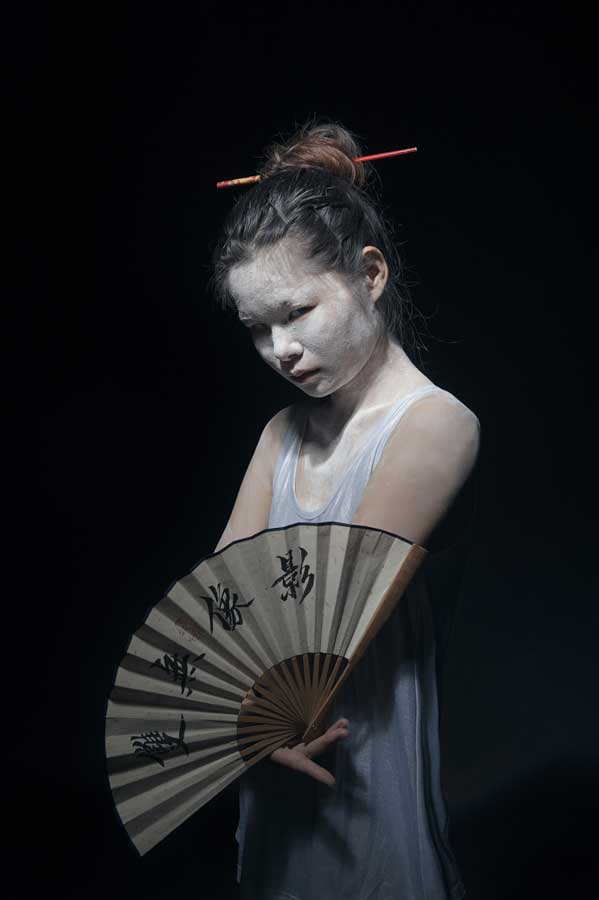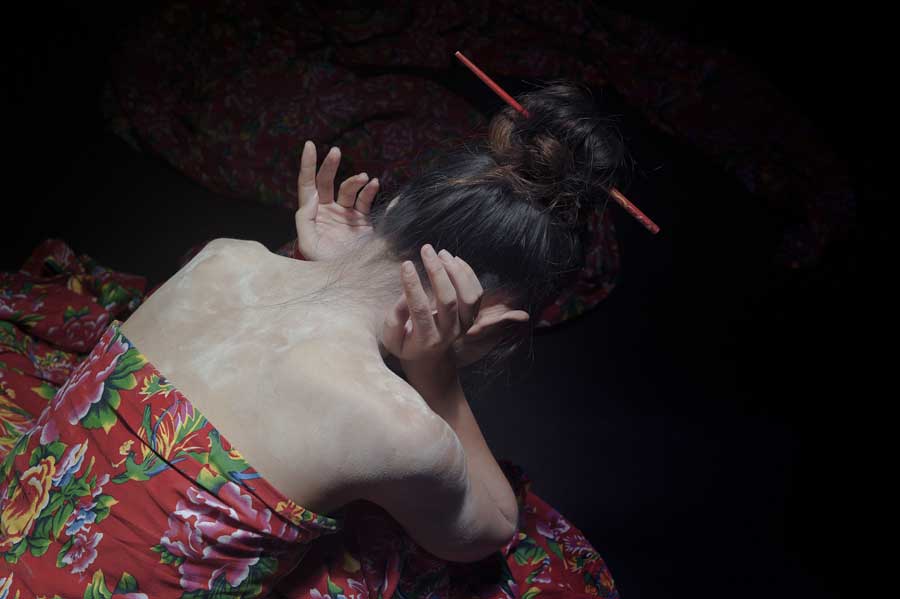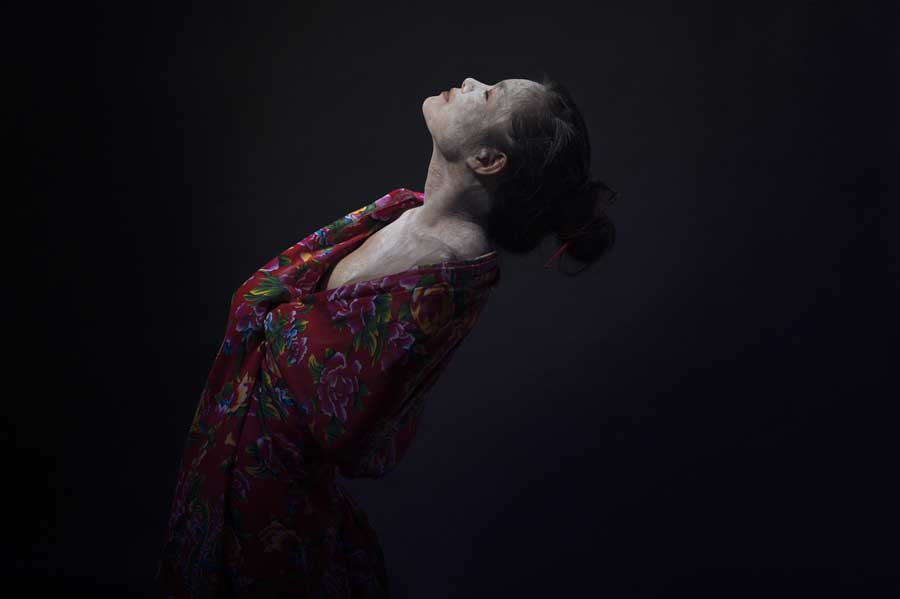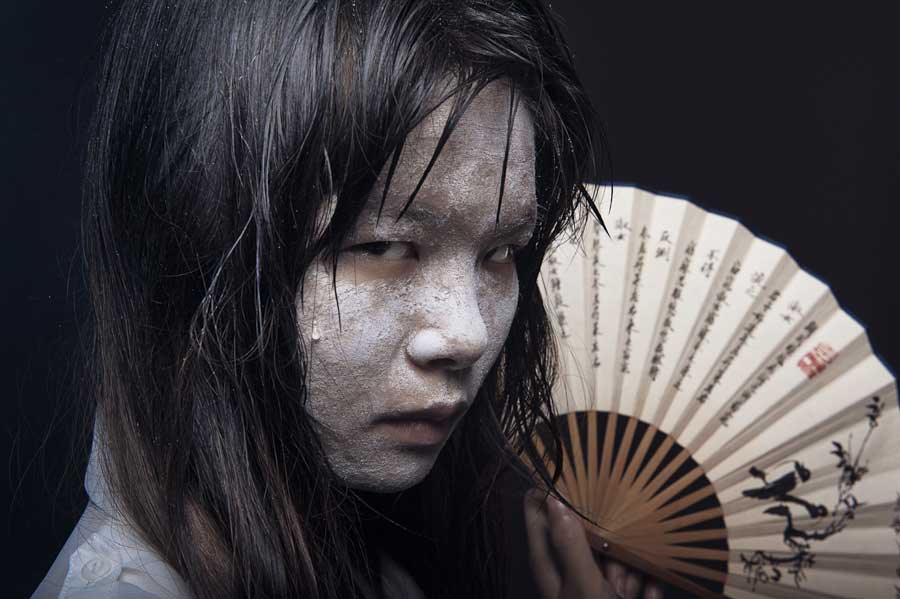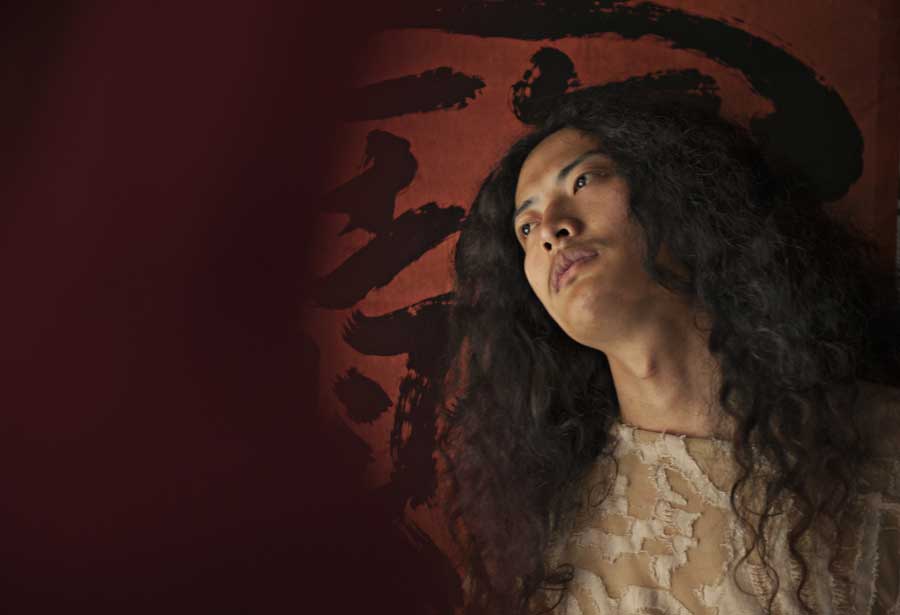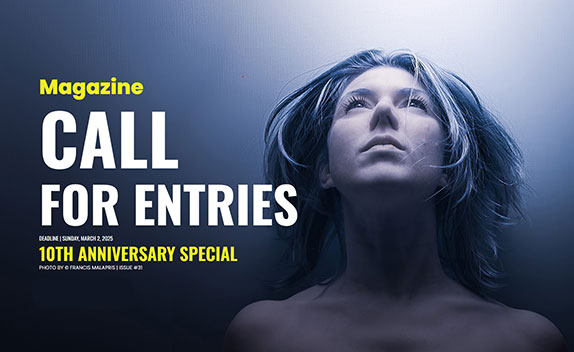In this series of conceptual portraits, I want to examine how young people in China find themselves at odds with their rapidly changing nation.
The model posing is a symbol for young people in China. She represents those who, like her, are pitched against the disparities of life in contemporary China, as it evolves further away from the traditions, values and culture of the past into an uncertain future.
Globalisation, liberalisation of education and the explosion of the economy’s growth have been the backdrop to this generation, who have no recollection of the Cultural Revolution years and are reaching forward for some kind of personal identity, with no pre-established societal framework to rely upon. The generation gap between them (the products of a one child policy) and their parents has widened almost immeasurably due to these factors. Finding themselves without this guiding influence in the quest for individuality, this generation seems at once too eager and dubious about embracing Western culture. Consequently, in an attempt to rationalise remaining “Chinese” in a globalised society, this generation clings to random elements of China’s past cultural roots. A comfort zone, which for these young people is becoming increasingly elusive, confusingly lacking in relevancy and distant, while gradually being replaced by an arising dystopian feeling. As their awareness for political issues in China today is increased, these youngsters are finding little or no outlet for challenging the status quo without putting themselves at great risk. Just beneath the surface of this generation’s lives there is both tension and fearfulness; and that is where, for the moment it lies- beneath a veneer of “Face”.
I called the series of images: “Breaking Face”. The concept of “Face” (Mianzi) is critically important in the day to day lives of the Chinese. In short , it can be defined as one’s own sense of dignity or prestige in a social (or business) context. It is an abstract concept combining social standing, reputation, influence, self worth and honour. Causing someone to “lose face” lowers them in the eyes of their peers while saving or “building” face elevates their self worth. It is a good example of something which has endured despite the transformations of China’s society and continues as a form of social control today.
The generation portrayed in this series of images is represented symbolically by only one face. The model’s face is covered with patchy powder A metaphor for the value still placed on maintaining Face at a personal level – at a community level and through one’s actions. Usually a Chinese person can be expected to “behave properly”, generally to avoid the shame associated with the fear of losing face, yet paradoxically not because they might feel badly about their actions.
I was fortunate to be able to work with this particular model. Within her general demeanour and range of expressions she has the ability to project intensity, self awareness, deep empathy, brooding rebellion and suppressed anger along with a certain vulnerability. She seems to embody many the above mentioned paradoxes as well as offering new ones. providing both a metaphor for a generation of Chinese youth and the already abstract concept of Face itself.
About Jamie Lowe
I have had a passion for photography ever since being at art school. With my background of art and design study and later art teaching in a variety of locations around the world, I have always loved photography. It began as a necessary support and accompaniment to making art but gradually evolved into a choice of medium.
As a portrait and travel photographer. I like to shoot people. I use the process of creating photographs to connect with people so that the camera becomes a two-way device for communication. My portraits attempt to capture the subtle aspects of my subjects personalities and their character traits. Projects like “Breaking Face” and the examples of other portraits here are particularly satisfying as they arise out of chance encounters with ordinary people here in Guangzhou. Often there is only one preliminary meeting before a shoot is agreed and done. More often than not there is a language barrier to negotiate (my Chinese language ability is truly awful) in order to convey a complex creative idea. Too often there are many variables and things which can and do go wrong. (life for years abroad tends to make one very adaptable). Sometimes there is common purpose. Occasionally there is a “happy accident” – (of lighting, location change or some other unaccounted-for beneficial incident). Always there is a bond of friendship. [Official Website]
My travel and editorial images are created as a result of seeking the human element, the everyday, the routine, the rituals and practices which occur against a backdrop of the unfamiliar- yet remind us somehow of our own lives. The photographs I take aim to reveal something about an experience that promotes inquiry and interest and it is hoped their impact remains in the viewer’s mind afterwards. Clients for my work include ‘South China Morning Post’, Hong Kong, ’Word’ magazine, Vietnam and corporate clients. I am also a keen writer and enjoy maintaining my journal “The Ministry of Noodles” which can be found on my website.
I like to say that: “photography always wins” and this is due to photography’s ability as a medium to evolve and adapt over time. Photography has that shape-shifting diversity; that ability to run alongside us in every aspect of our lives. It is as if it mirrors and records our humanity with near supernatural concern. I love to share my passion for it!
Currently I live and work in Guangzhou China with my Malaysian wife and have lived for the most time in Asia although I am from Edinburgh in Scotland originally.



